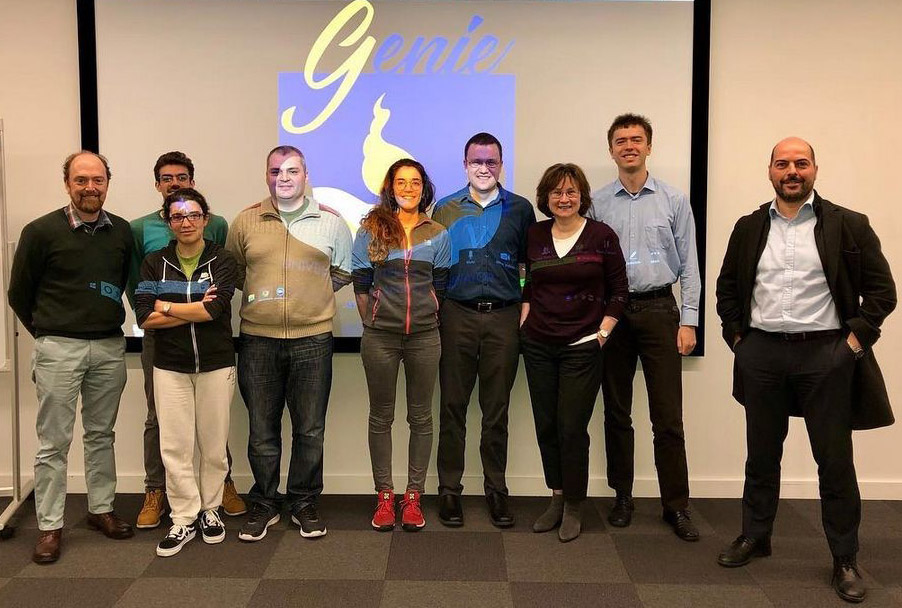Hadronisation model tuning in GENIE v3

LIV.DAT PhD student Jùlia Tena-Vidal has recently had a paper published in Phys Rev D about Hadronisation model tuning in GENIE v3. The paper presents the first GENIE tune of the AGKY model, which was possible thanks to the Professor framework . The aim was to improve GENIE agreement with neutrino charged averaged multiplicity data and to provide the first data-driven constraints on hadronisation parameters. Parameters of both the low-hadronic invariant mass empirical model and PYTHIA (for high energy invariant mass) were constrained using data from the Big European Bubble Chamber and Fermi National Accelerator Laboratory 15 ft bubble chamber experiments filled with hydrogen and deuterium.
Tensions between hydrogen and deuterium data were observed, and two separate tunes were performed: a global tune and a deuterium-only tune. In particular, the 2021 AGKY global tune prediction under predicts the deuterium data at the PYTHIA region, whereas the deuterium-only tune over predicts the hydrogen data.
Further investigations on hadronisation samples are needed in order to clarify the origin of this discrepancy. A possible solution could come from more recent neutrino experiments that released data on neutrino-induced hadronisation. However, the samples examined include nuclear effects and therefore are not in the scope of this work.
Despite the tensions, the global tune shows better agreement with the charged averaged multiplicity data and provides the first data-driven analysis of this kind using neutrino interactions. This statistical analysis can be a useful input for proper systematic studies of modern neutrino experiments. The main effect of the tune is the increase of the averaged charged multiplicity for hadronic invariant mass greater than 10GeV/c2 modelled with PYTHIA. The low hadronic invariant mass region is also affected, but constraints due to energy, momentum, charge, baryon number, and strangeness conservation laws reduce the available phase space and the effect of the tuning procedure.
The effect of the 2021 GENIE AGKY global tune at the Shallow Inelastic Scattering region is an increase on the two-pion production cross section, which affects the current agreement with Charged-Current inclusive data. Therefore, it is concluded that this tune is more appropriate at higher energies where the contribution of the Shallow Inelastic Scattering region is not relevant. The information on the systematic uncertainties coming from the low hadronic invariant mass AGKY parameters is still valuable for neutrino experiments interested in the hadronic invariant mass less than 2 GeV/c2 region. A joint tune of the Shallow Inelastic Scattering region and hadronisation datasets would address this disagreement.